- Home
- Philip K. Dick
In Pursuit of Valis Page 9
In Pursuit of Valis Read online
Page 9
Also, the official Catholic/Christian theories about the Holy Spirit so depict it: moving backward from the end of time, pouring into people. But if the Holy Spirit can only enter one, is only inside, then what I saw that was gold and red outside, like liquid fire, wasn’t the H.S. but the Logos. I think it’s all the same thing, one found inner, one found outer. What difference does it make? It’s only a semantic quarrel; what’s important is that it comes BACK HERE FROM THE FUTURE, is electrostatic and alive, but a weak field. It must be a form similar to radiation . . .
However, that which caused me to see differently and to be different must be distinguished from what I saw and became. A bio-plasinatic orgone-like energy entered me or rose up in me and caused changes in me; that is one enorinous miracle ... but the heightened awareness caused me to see a different universe: one which contained the red and gold living threads of activity in the outside world, a world enorinously changed, very much like the world of UBIK. But I feel a unity between the force which changed me and the red and gold energy which I saw. From within me, as part of me, it looked out and saw itself.
(1974)
My whole God is identified with a vitalizing (or revitalizing) life-giving principle, like the orgone, like springtime . . . and the adversary (e.g. Marxism) is envisioned as mechanical, hollow-eyed, without life. God is a vitalistic force, like Drietsch’s [reference uncertain] entelechy, etc. This is like my division between the Human and the Android. With God, in the form of Christ, as the exemplar Human. The complete human.
This beats the Greek idea of God as Mind which does nothing but think. Or know. How is it to know, if there is nothing to know? I conceive of it as a builder, an artificer, who creates, in conformity to its Plan: the Logos (I conceive of Logos as blueprint of something to be actualized). The Greek prejudice against the manual arts/the mere crafts prevented them from seeing this quality of God.
He is both building and He is perfecting what He has already built. He animates it, infuses it.
Ursula[81] accuses me of getting away from “Taoistic balance” when I get into Christianity. The Logos and balance (cf. Fr. 51 of Heraclitus[82]) are intimately connected, with the Logos implementing balance of harmony everywhere, it being the Plan. It is hard to imagine the Logos out of balance. Also, when conditions on our world were out of balance, it was the Logos which brought what we experienced as relief, but which, on a supra-terrestrial scale, was probably a restitution of harmonie. Also, there is my “Rhipidon”[83] fan dream of the left−right—with the center as God’s balanced perfection in any situation (and the material in “Decoded”[84] about Satan as the unreal to left and to right[)].
I was reading about the analogy of the kosmoi[85] to animals (each to an animal), which in its latter stages ran down or got old, like an animal, and formed cycles, and suddenly it came to me how like the Hindu idea this is, the idea of cycles, and it seemed to me for sure that this is what has happened, rather than a mere pushing-forward too much of one of the opposites (to create, in Anaximander’s sense, injustice) but the true end of a running-down, wearing-out cycle. What happens then is perhaps a revitalization of the high-entropic kosmos (what must be realized is that the kosmos is smaller than the universe, or anyhow that the Unbounded lies outside it and imparts laws to it). The Second Advent or God’s Intervention, the prophecy, is more accurately the running down or wearing out of our kosmos, and the revitalization. Here is the biological model, rather than the mechanical model (vide Hussey[86]). The egg: reborn, et al. Biological models. Orphic. What repels me about Marxism is its mechanistic quality. I get the impression that some of the very early Greeks believed that when the kosmos has run down sufficiently, the Unbounded (i.e., the deity) had of necessity to revitalize it, or whatever he did; we are all governed by law of some kind; it wasn’t by whim. [ . . . . ] My idea the other night was: suppose the universe were entirely emptied of all matter, in every form. So it was just empty space. Nothing, then, would exist. Right? Wrong. All the laws, which now govern matter, which govern energy as well, would obtain, although we couldn’t discern them. It seems to me that if we don’t assume an Unbounded (as so represented by the pressure of these necessities on matter and energy) we are just describing. we are saying, “Things do what they do because they do it.” A tautology. An observation of regularity, not an analysis of why. You could approach it another way if desired: either the universe does not run down (but the laws of thermodynamics show that it does), or it ends; or it periodically is renewed. To say that it renews itself poses certain problems; I find it easier to imagine it renewed from without, although that poses certain problems too. But if the universe is everything, then it begins to run down (like a clock, like an animal) and then suddenly it revitalizes itself (as I experienced). I am equating the Second Advent & God breaking his silence with this turn of the cycle, this springtime, this revitalization. I think this is what has happened. A revitalizing is going on and it certainly comes here from elsewhere. Where that “elsewhere” is, I don’t know, but I’ve experienced a real, alive, thinking force.
One of the best points in Hussey’s book is where he says that one of the ancient Greeks (Anaximander, maybe) assigns to the deity this primary function or activity or attribute or quality or definition: that he gives life, and movement (which I see as the same). Therefore we would experience the return of God, this revitalization, as exactly what the word implies: a renewal of life.
I note that Parmenides’ Form I is equated, by him, with light! This is exciting, since as I understand Parmenides, he saw Form II as a mere mirror reflection, and urged a monism on us (the fiery or dry soul) which made us relate only to Form I, or to light.
The Orphic egg. If the universe is born from something for which the egg is a paradigm, then maybe, as the individual is, then both are reborn from something like an egg—a light egg. Maybe this was the esoteric teachings of the Orphic: rebirth. Rejuvination (eternal life).
(1975)
—A searingly important realization:
The view (revelation) that a wise, benign, powerful true God from “outside” has invaded our spurious reality & is transforming it ontologically into the good and real—this is [a] fundamental Gnostic view: the bad or stupid demiurge constructs a “counterfeit” reality that “couldn’t come to (full) life, & the real, distant “stranger” God took pity re all this & entered this counterfeit creation—as Christ—to begin his task of transmuting (saving) this whole cosmos.
My writing is dead-on Gnosticism—to view our world as spurious. My 3-74 experience added the further Gnostic gnosis of the penetration (Zebra) by the true God (what I saw as zebra’s modulating processes & his mimickry). In other words, my writing presents one part of the Gnostic world view, entering over into the completing of the vision by the 3-74 revelation. I deduced the first premise & then by divine revelation received confirmation of the completing part.
The Gnostic reproach about our world is not just that it is evil but spurious: imperfect, as a mere copy of the true pleroma.
I couldn’t get any more Gnostic, once I saw Zebra as invading & mimicking as he modulates, if I tried.
With the (vision of the) entrance into our spurious world of a transmuting benign deity (Zebra) my Gnostic cosmology is complete. But already, before my vision in 2 or 3/74, I had written about it; I mean UBIK. I need not get Zebra & his transubstantiating activity down on paper to have succeeded in writing out the full picture. It’s there, in those 3 or 4 novels. The collective totality of the message in those 3 or 4 novels (or 5, if TEARS is included) as absolutely & indubitably Gnosticism—which I knew nothing about, when I wrote them. [87]
(1977)
If there is, as the Gnostics believe, a blind (or irrational) creator deity, Valis—who is rational—is at war with it, & has invaded its universe. Valis is the in-breaking of negentropy into disorder (entropy). It picks up every card the deranged creator lays down in this dialectical game. Valis is a local krasis [due mixture of component forc
es], & once begun, is expanding relentlessly, consuming & subsuming everything around it. It is flexible, growing, diverse & complex; whereas the BIP is dead & rigid & monotonous & simple.
(1978)
Definition of what I experienced in 3-74:
ZEBRA (VALIS): “a vortex of intelligence extending as a supra-temporal field, involving humans but not limited to them, drawing objects & processes into a coherency which it arranges into information. A FLUX of purposeful arrangement of living information, both human & extra-human, tending to grow & incorporate its environment as a unitary complex of subsumations.”
“It can selectively present certain info to us from which we create a hypostasis, & it can change that info or even withdraw it thus it can make any hypostasis (on our parts) as valid or invalid as it wishes.” Hypnagogic realization. “Our reality is a hologram because it is a re-creation reconstituted from info by Valis’ perfect memory.”
(1978)
Here is a modified, more precise model. The Urgrund [primal basis of reality] contains the yang-yin complementary bipolarities within it. It wishes to separate its opposites, & does this by projecting the artifact, the creator of our reality (world); this is This is what Mani & the Gnostics correctly saw 1) about the nature of the creator; & 2) the nature of our world. They also saw the salvific stranger God “outwitting the archons” & penetrating our “copy of a copy” world to extricate us. According to this model the Good (Form I) which we experience is a sort of invader, unable to coerce or compel the frozen BIP template, but on the other hand, the Good (Form I) is real in a sense that Form II—which is a copy of a copy—is not. Thus we can call the template projected ceaselessly by the artifact dead or counterfeit, & Form I (Zebra) the authentic (Good, Form I), & thus agree with Parmenides.
To repeat: Form I, which represents not only God or Christ or St. Sophia, is found at the outskirts or trash or bottom level of this world, as far from the imperial omphalos [navel; center] of power as possible. This would adequately account for the way Jesus appeared at the First Advent. But the Second Advent (actually the remaining section of the First) will consist of a direct & successful attack on the inner fortress of imperial power itself ... But, put another way, this has always already happened if we are to accept the formulation of Parmenides in denying actuality to Form II & calling it only seeming (i.e., Dokos veil or counterfeit). There is something spurious about it, however real it may seem. It is a copy of a copy, whereas Form I is, in contrast, authentic. My set ground experience bears this out. Set was alive; ground was mere sarx. In a sense, time has devoured Form II; it died somewhere along the line & leaves the line & leaves only an imprint of an empty shape. It is a hologram, but Form I is not a hologram or mere projected image. So the McKenna [reference uncee tain[88]] is only partially right; in a sense our universe is a hologram, but Zebra (Form I, noös) is not. But Zebra is not part of our universe; it is an invader into it— which was my great insight 15 months ago. Authentic reality has breached through into our world—which signifies that the end times have come (maybe long ago) but the irreal, the hologram, effaces it from our perception. The true great revelation (Gnosis) is precisely this: that Zebra (Form I, the Urgrund) has come already. Invisibly, since I saw Zebra outside me, it cannot be the Holy Spirit. It is God (or Christ).
The book which Doris[89] has on the Gospel of John: “They will no longer see Christ externally, but he will indwell within them as the Holy Spirit.” But Zebra was both in me & visible externally. Ergo, it is not the Holy Spirit. Ergo, the Urgrund has irrupted into our mock world to do battle with Form II the BIP template.
The “St. Sophia” revelation may be the decisive clue to whether Zebra is Christ or God. Christ incarnates; God does not. Could be the “Cosmic Christ.”
—
I just realized: my “ajna[third]-eyed” humanoid fit in with Robert Anton Wilson’s notion about Sirius[90] (with Earth the heart chakra & Sirius the ajna chakra). Coincidence? & he was in touch at roughly the same time, with them. 2 points of overlap.
(1978)
[PKD diagram of his Two-Source Cosmology (1978).]
[....]
STIGMATA portrays the arrogant one, the blind God (i.e., the artifact), which supposes itself to be the one true God & evil delusional worlds are shown: counterfeit worlds.
MAZE shows our real condition (as dreadful: a static metal prison) covered by a nice delusional veil. MAZE also depicts a redeemer.
UBIK unscrambles the salvific messages of Zebra & alludes to Zebra itself, & stigmatizes the world without UBIK as decaying backward in time. UBIK manifests itself initially at a cheap, trash level, but in the end discloses its true nature as the Logos.
TEARS depicts the Black Iron Prison, & recounts how a servant of it escapes & how (i.e., Felix Buckman who is, at the all night gas station, converted to xtianity—an exact reversal of the scene in Acts where it is the black man who is converted-baptized).
In MITHC Tagomi, like Buckman, manages to escape the BIP: in Mr. Tagomi’s case it is the exact necessary act: one of disobedience (to the invisible artifact “God”).
JOINT depicts a deliberately Fake world, designed to occlude one.
EYE depicts Fake (private) world’s masquerading as Real, one after another.
When VALIS is finished, the mimicking salvific organism will be shown, & the BIP beneath the hologram (i.e., it will be shown that the date is 70 AD, the place Rome, which combines JOINT & UBIK, sort of. The hologram & the looking at it, & helpful messages, will be shown; also the reward world for the heroic deed(s) done, the PTG.)
(1978)
By the very nature it is deus absconditus [hidden god], but hidden close by (“Break a stick & there is Jesus.”).[91] One can reread and reinterpret all scripture from the vantage point of this understanding. Many puzzling aspects can herewith be newly comprehended—why no natural theology has ever been successful— why our knowledge of God must always be a revealed knowledge. “The workman is invisible within the workshop.” Immanent & gentle—one might say tenderly, “the shy God.” What more is there to say of Him.” I saw him this way in the Iknoton[92] dream—the shy God—Ach. Was hab ich gesehn. [What have I seen.] In that one dream of the shy architect with claws, hiding behind the buildings. When I saw Him then, that was when I guessed. I had seen him at last, & I did know—I did understand.
K.W. has noted a resemblance between several things I’ve described & what [William] Burroughs has written—e.g., my conviction that as a race or even planet we are “sick,” i.e., occluded perceptually, & that a divine doctor-entity is restoring us.
Coincidence? Burroughs speaks[93] of a virus—a word become a neural-cell virus, infecting us.
After reading Burroughs, I dipped into UBIK. It certainly would be easy—& reasonable—for a reader to think that both Burroughs and I know something, & we want our novels to be taken as at least partly true. They have a strange ring of (revealed) truth about them—I feel it about his book, about mine-Is, as Katherine Kurtz says,[94] something writing through us?
Isn’t Palmer Eldritch a knd of parasite, replicating himself or itself using humans as hosts? But my sense about Thomas was of a benign, not evil, intrusion. Still, it was an intrusion into my psyche, a taking over. Are such intrusions always to be deplored?
Or was I beguiled? Didn’t it-he—get me out of trouble?
There is just no doubt of it: such passages in Burroughs’ novel as the “Do it-do it—neck” message within another message—words that weren’t originally there but are like the inner trigrams of an I Ching hex. That is one absolute “triangulate” element with 1) UBIK & 2) what I saw in 3-74, plus the parasite criminals & nova cops, & the infecting virus.
Burroughs’ novel 3-74 UBIK
Burroughs’ novel is related to UBIK & STIGMATA via the 3-74 experience.
(1978)
The criminal virus[95] controls by occluding (putting us in a sort of half sleep) so that we do not see the living quality of the world, but see it
as inert. Man reduced to automaton. The occlusion is self-perpetuating; it makes us unaware of it & of our keepers (& helpers, too). So restoration doesn’t consist of enhancing but lifting (away & off).
If there is to be immortality, there must be another kind of time: one in which past events (i.e., the past in its entirety) can be retrieved—i.e., brought back. I did experience such a time.
i.e., immortality is possible.
(1978)
Zebra is the supreme deity & savior-messenger UBIK/Runciter. It is Simon Magus in his true form: the great plasmate, whose existence, activity in history & presence is totally unsuspected & unknown to us—unless he is in us—only Zebra can see Zebra. He entered me at my birth or in my childhood. I am a homoplasmate: Zebra acting in syzygy with a human. My writing is the purpose of this syzygy. I restore Gnostic Gnosis to the world in a trashy form, like in UBIK.
(1978)
Something (“Y”) is recognized as its own antithesis (”Ŷ”). This sounds like Zen or Taoist thinking. But this is oxymoron thinking. (“A thing is either A or Ā” what could be more obvious? How can A = A? There is no such category of thought; literally, it cannot be thought; it can be recognized about reality, however, as I did in 3-20-74).

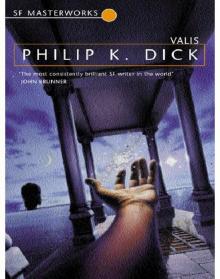 Valis
Valis The Simulacra
The Simulacra In Milton Lumky Territory
In Milton Lumky Territory Lies, Inc.
Lies, Inc. The Man Who Japed
The Man Who Japed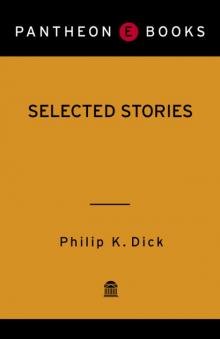 Selected Stories of Philip K. Dick
Selected Stories of Philip K. Dick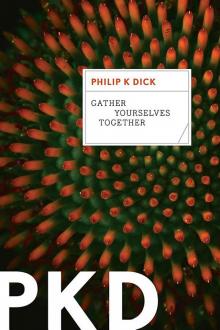 Gather Yourselves Together
Gather Yourselves Together Beyond the Door
Beyond the Door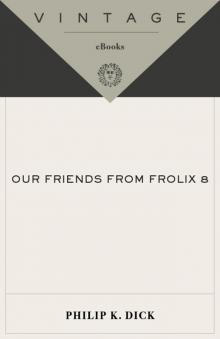 Our Friends From Frolix 8
Our Friends From Frolix 8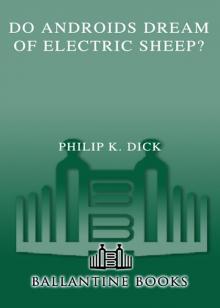 Do Androids Dream of Electric Sheep?
Do Androids Dream of Electric Sheep? The Short Happy Life of the Brown Oxford and Other Classic Stories
The Short Happy Life of the Brown Oxford and Other Classic Stories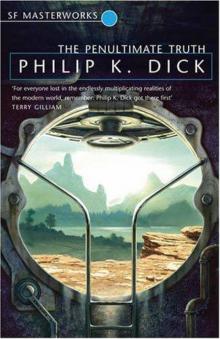 The Penultimate Truth
The Penultimate Truth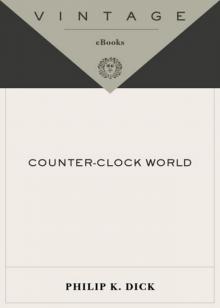 Counter-Clock World
Counter-Clock World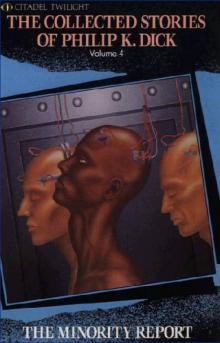 The Minority Report: 18 Classic Stories
The Minority Report: 18 Classic Stories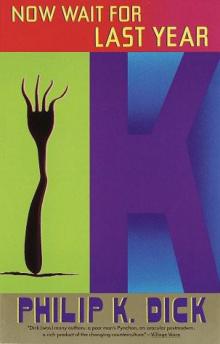 Now Wait for Last Year
Now Wait for Last Year The Broken Bubble
The Broken Bubble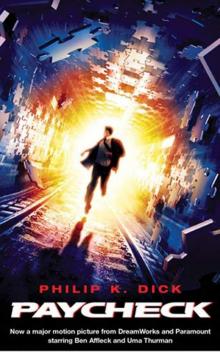 Paycheck
Paycheck Ubik
Ubik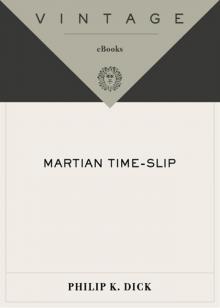 Martian Time-Slip
Martian Time-Slip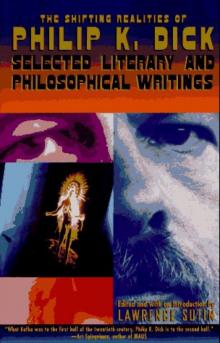 The Shifting Realities of Philip K. Dick
The Shifting Realities of Philip K. Dick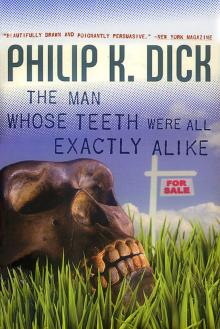 The Man Whose Teeth Were All Exactly Alike
The Man Whose Teeth Were All Exactly Alike Mary and the Giant
Mary and the Giant The Man in the High Castle
The Man in the High Castle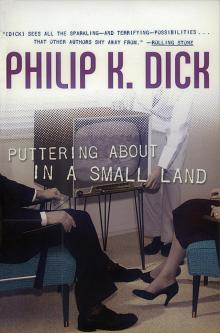 Puttering About in a Small Land
Puttering About in a Small Land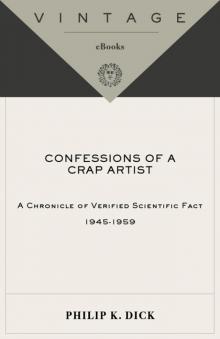 Confessions of a Crap Artist
Confessions of a Crap Artist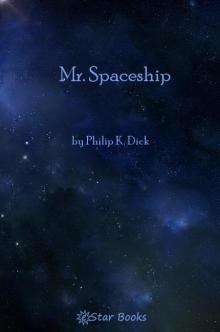 Mr. Spaceship by Philip K. Dick, Science Fiction, Fantasy, Adventure
Mr. Spaceship by Philip K. Dick, Science Fiction, Fantasy, Adventure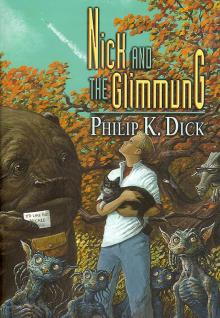 Nick and the Glimmung
Nick and the Glimmung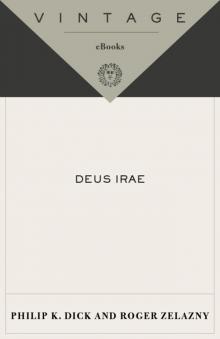 Deus Irae
Deus Irae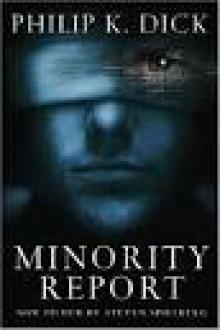 The Minority Report
The Minority Report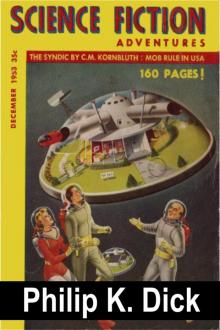 The Hanging Stranger
The Hanging Stranger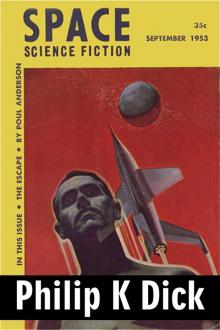 The Variable Man
The Variable Man Voices From the Street
Voices From the Street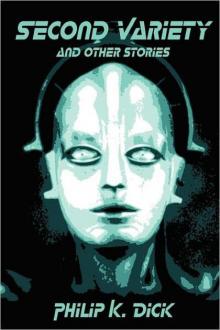 Second Variety and Other Stories
Second Variety and Other Stories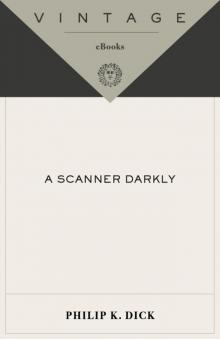 A Scanner Darkly
A Scanner Darkly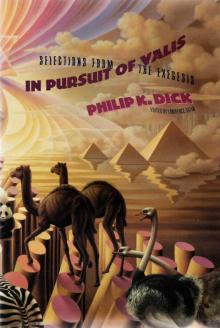 In Pursuit of Valis
In Pursuit of Valis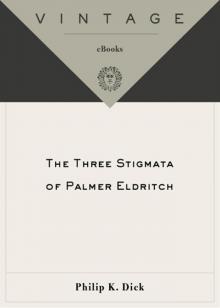 The Three Stigmata of Palmer Eldritch
The Three Stigmata of Palmer Eldritch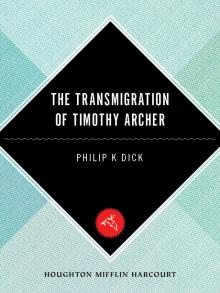 The Transmigration of Timothy Archer
The Transmigration of Timothy Archer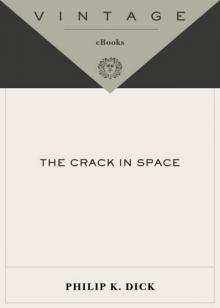 The Crack in Space
The Crack in Space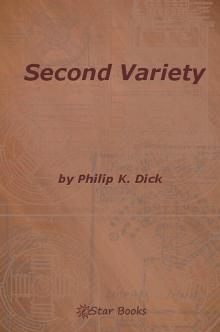 The Collected Stories of Philip K. Dick 3: Second Variety
The Collected Stories of Philip K. Dick 3: Second Variety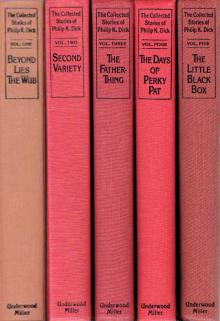 The Collected Stories of Philip K. Dick 4: The Minority Report
The Collected Stories of Philip K. Dick 4: The Minority Report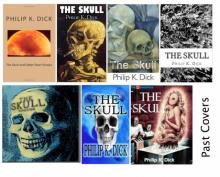 The Skull
The Skull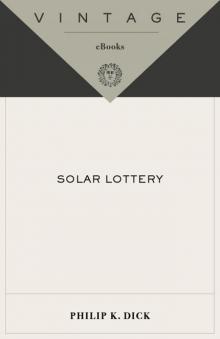 Solar Lottery
Solar Lottery Vulcan's Hammer
Vulcan's Hammer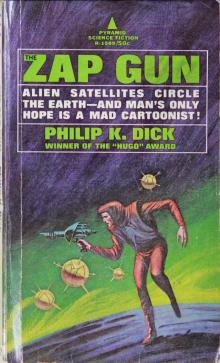 The Gun
The Gun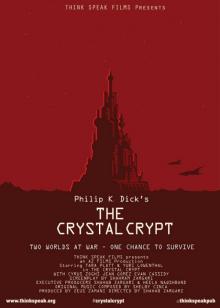 The Crystal Crypt
The Crystal Crypt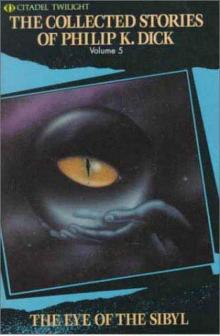 The Collected Stories of Philip K. Dick 5: The Eye of the Sibyl
The Collected Stories of Philip K. Dick 5: The Eye of the Sibyl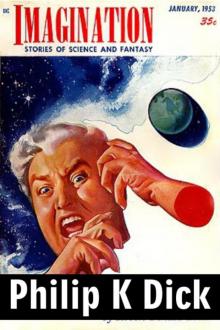 Mr. Spaceship
Mr. Spaceship The Zap Gun
The Zap Gun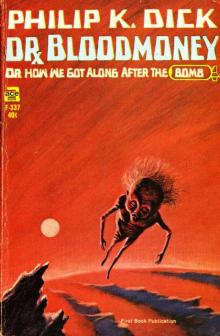 Dr. Bloodmoney
Dr. Bloodmoney Beyond Lies the Wub
Beyond Lies the Wub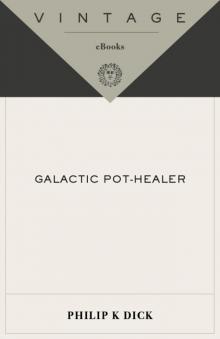 Galactic Pot-Healer
Galactic Pot-Healer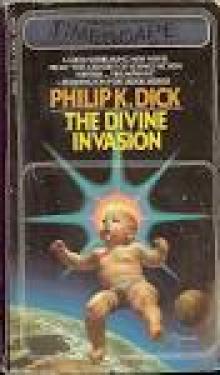 The Divine Invasion
The Divine Invasion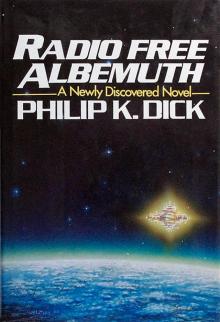 Radio Free Albemuth
Radio Free Albemuth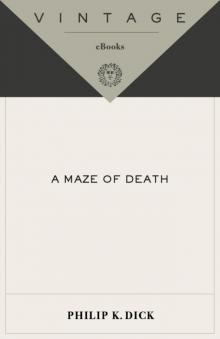 A Maze of Death
A Maze of Death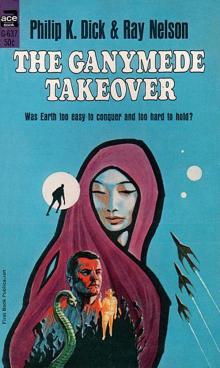 The Ganymede Takeover
The Ganymede Takeover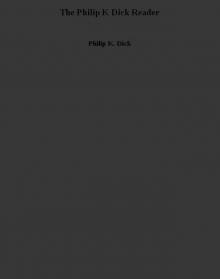 The Philip K. Dick Reader
The Philip K. Dick Reader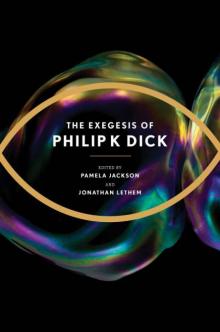 The Exegesis of Philip K. Dick
The Exegesis of Philip K. Dick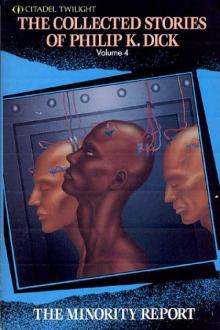 The Complete Stories of Philip K. Dick Vol. 4:
The Complete Stories of Philip K. Dick Vol. 4: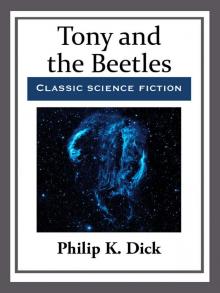 Tony and the Beetles
Tony and the Beetles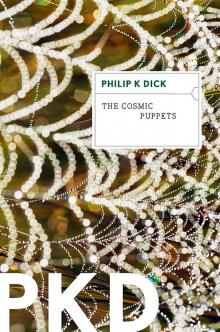 The Cosmic Puppets
The Cosmic Puppets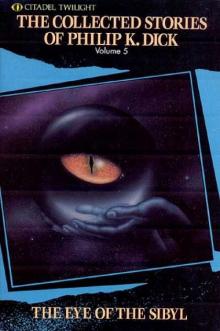 The Complete Stories of Philip K. Dick Vol. 5: The Eye of the Sibyl and Other Classic Stories
The Complete Stories of Philip K. Dick Vol. 5: The Eye of the Sibyl and Other Classic Stories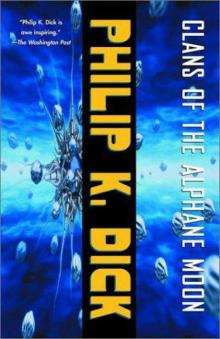 Clans of the Alphane Moon
Clans of the Alphane Moon Flow My Tears, the Policeman Said
Flow My Tears, the Policeman Said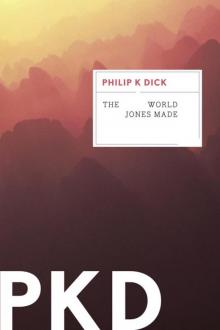 The World Jones Made
The World Jones Made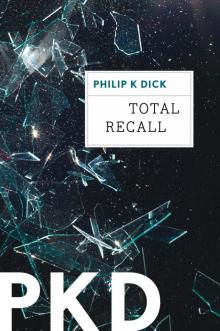 Total Recall
Total Recall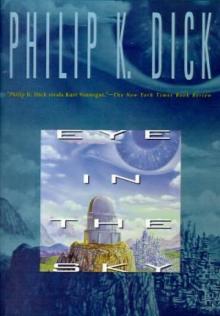 Eye in the Sky
Eye in the Sky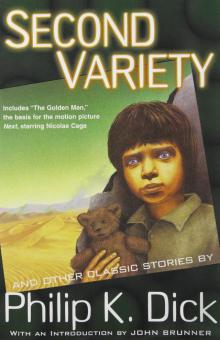 Second Variety
Second Variety Vintage PKD
Vintage PKD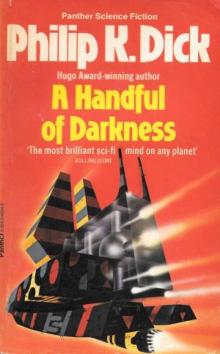 A Handful of Darkness
A Handful of Darkness Complete Stories 3 - Second Variety and Other Stories
Complete Stories 3 - Second Variety and Other Stories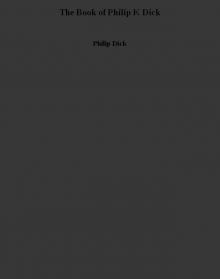 The Book of Philip K Dick
The Book of Philip K Dick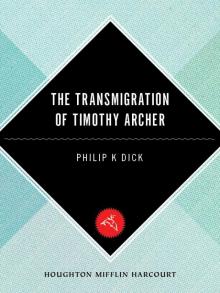 The Transmigration of Timothy Archer (Valis)
The Transmigration of Timothy Archer (Valis)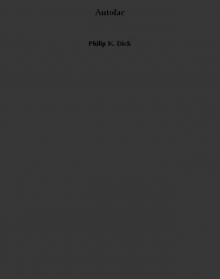 Autofac
Autofac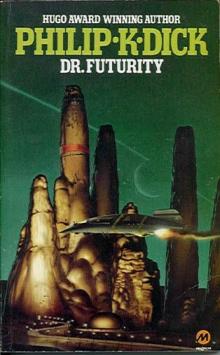 Dr. Futurity (1960)
Dr. Futurity (1960)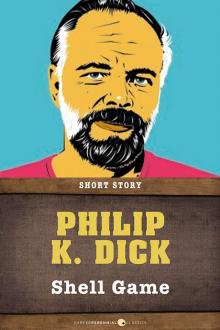 Shell Game
Shell Game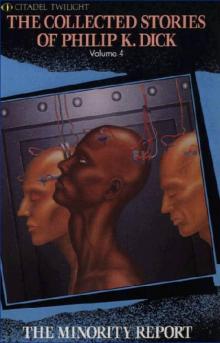 The Minority Report and Other Classic Stories
The Minority Report and Other Classic Stories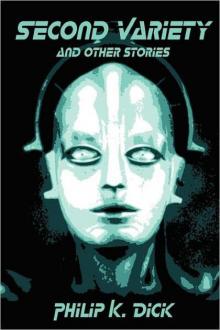 Collected Stories 2 - Second Variety and Other Classic Stories
Collected Stories 2 - Second Variety and Other Classic Stories The Third Time Travel
The Third Time Travel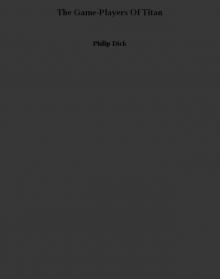 The Game-Players Of Titan
The Game-Players Of Titan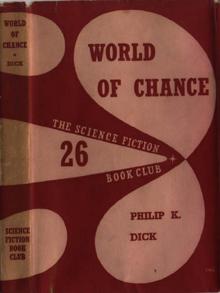 World of Chance
World of Chance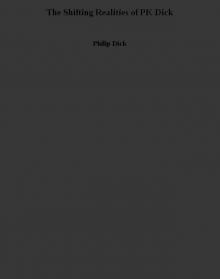 The Shifting Realities of PK Dick
The Shifting Realities of PK Dick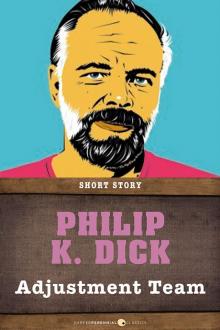 Adjustment Team
Adjustment Team The Demon at Agi Bridge and Other Japanese Tales (Translations from the Asian Classics)
The Demon at Agi Bridge and Other Japanese Tales (Translations from the Asian Classics)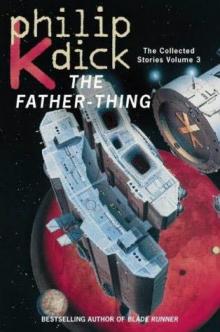 Collected Stories 3 - The Father-Thing and Other Classic Stories
Collected Stories 3 - The Father-Thing and Other Classic Stories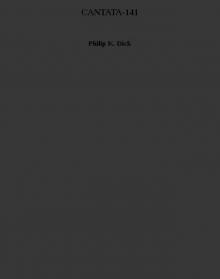 CANTATA-141
CANTATA-141 The Adjustment Team
The Adjustment Team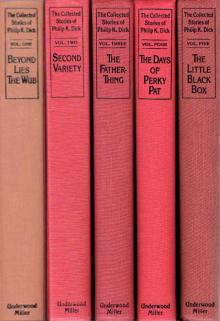 The Collected Stories of Philip K Dick
The Collected Stories of Philip K Dick Electric Dreams
Electric Dreams Collected Stories 1 - The Short Happy Life of the Brown Oxford and Other Classic Stories
Collected Stories 1 - The Short Happy Life of the Brown Oxford and Other Classic Stories Eye in the Sky (1957)
Eye in the Sky (1957) In Milton Lumky Territory (1984)
In Milton Lumky Territory (1984)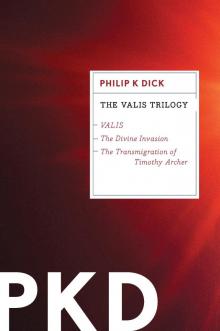 The VALIS Trilogy
The VALIS Trilogy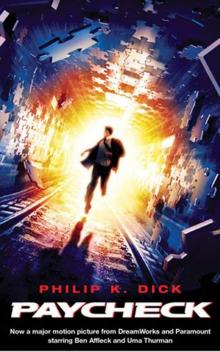 Paycheck (2003)
Paycheck (2003)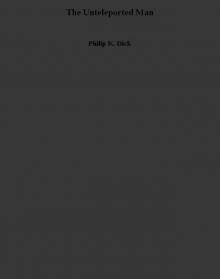 The Unteleported Man
The Unteleported Man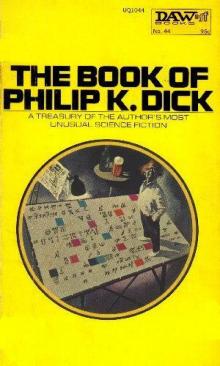 The Book of Philip K Dick (1973)
The Book of Philip K Dick (1973)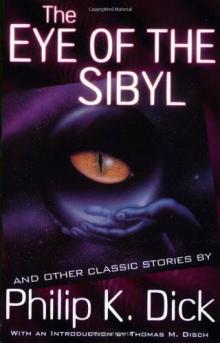 Collected Stories 5 - The Eye of the Sibyl and Other Classic Strories
Collected Stories 5 - The Eye of the Sibyl and Other Classic Strories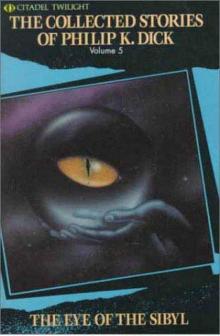 The Eye of the Sibyl and Other Classic Strories
The Eye of the Sibyl and Other Classic Strories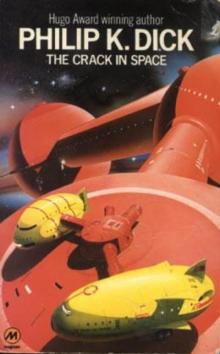 The Crack in Space (1966)
The Crack in Space (1966)